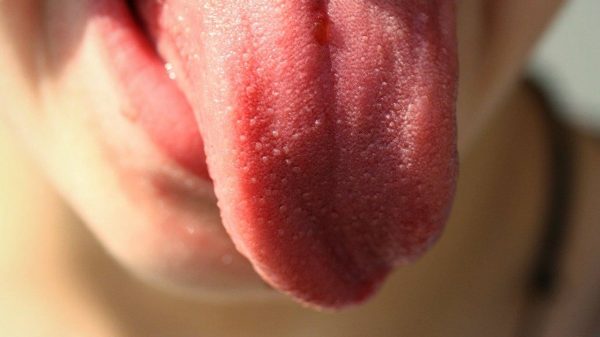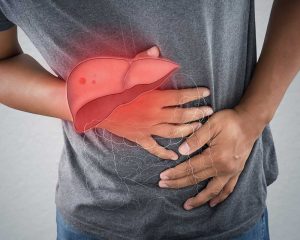Thanks to advances in science and technology, medical conditions and other illnesses can now be diagnosed and monitored. With better methods for diagnosis and monitoring, illnesses and other conditions related to health may now be more easily managed than ever before. For example, healthy weight and obesity can readily be identified using the BMI or the Body Mass Index. MRI or Magnetic Resonance Imaging can help doctors get internal pictures of body organs. One other diagnostic tool is known as the NAFLD score and for people who have no background in medicine or the medical sciences, this can be quite technical. That is why in this article, we look at the score formula and interpretation of NAFLD and the details behind the illness it tries to diagnose which is the non-alcoholic fatty liver disease. Read on to find out more!
NAFLD (Non-Alcoholic Fatty Liver Disease) Score: A Brief Introduction
Generally speaking, the non-alcoholic fatty liver disease score (NAFLD) is a non-invasive way of finding out which patients will have a worse kind of cirrhosis or liver disease. As stated earlier, this diagnostic procedure is supposed to be non-invasive as it is in the form of a simple blood test. The NAFLD score will take into account a number of different factors such as the ratio of AST (aspartate aminotransferase) to alanine aminotransferase (ALT), levels of albumin, platelet count, BMI or body mass index, hyperglycemia, and age.
Interpreting the scores of the NAFLD can be quite simple if one knows how. High accuracy of advanced liver cirrhosis will usually be obtained for those with a score of 0.676 and above Those who scored 1.455 and under, the chances of liver fibrosis can be excluded with accuracy that is fairly high. Some results though can be given an indeterminate rating if they are between -1.455 and 0.676.
Non-Alcoholic Fatty Liver Disease: Should we be concerned?
Excessive drinking can lead to liver accumulating or building up fat in the liver. This can lead to liver tissue scarring referred to as cirrhosis. The functions of the liver can get reduced depending on the severity of the scar occurrence. The liver can also have an accumulation of fatty liver even if the individual drinks no or little amounts of alcohol. This condition is referred to as NAFLD or nonalcoholic fatty liver disease which can also lead to cirrhosis.
Changes to the lifestyle can often aid in the prevention of the worsening status of NAFLD. If these lifestyle changes are not enough though, then it can cause problems that are life-threatening. The term Fatty liver disease covers both ALD (alcoholic liver disease) and NAFLD and has a technical definition of hepatic steatosis where the weight of the liver is around 5 to 10% composed of fat.
Some of the symptoms of NAFLD will have no symptoms that are noticeable. If they do present some symptoms, these will usually include yellowing of the eyes or the skin (jaundice), swelling in the belly or ascites, a spleen or liver that is enlarged, fatigue, and pain in the abdomen’s upper right side. Once the said condition moves towards full-blown cirrhosis, different symptoms such as loss of liver functions that are normal, retention of fluid, internal bleeding, and mental confusion.
Possible Causes of Non-Alcoholic Fatty Liver Disease
At present, experts are still unsure as to NAFLD’s exact cause. It is believed that there is a link between insulin resistance and disease. Insulin is classified as a type of hormone. When the tissues and muscles need sugar (glucose) to be used as fuel (energy), insulin aids in the cellular unlocking to allow glucose to be used as a source of energy. Insulin has also been observed to aid in the storage of excess glucose in the liver.
Once insulin resistance is developed in the body, it signifies that the cells in the body no longer give the response it should to insulin. As a result, the liver stores too much fat which can result in scarring of the liver and inflammation.
What are some of the Risk Factors for NAFLD?
Around twenty percent (20%) of the population in the United States (US). Resistance to Insulin seems to be the risk factor that is strongest although people can still get NAFLD without being resistant to insulin. People who are at risk for developing resistance to insulin are those individuals with sedentary lifestyles and those how are overweight or obese. Some other risk factors for the aforementioned health condition are pregnancy, cancer medications, corticosteroids, triglyceride levels that are high, cholesterol levels that are high, and type 2 diabetes.
Sudden weight loss and eating habits that are poor can also increase NAFLD risk in some individuals.
Diagnosing NAFLD
As stated earlier, NAFLD will usually have no symptoms that are physically present. As such, the diagnosis will commonly begin with a blood test that can check for liver enzymes that may be higher than usual. However, these liver enzymes may also indicate other possible conditions and it will be up to the healthcare partner to rule out or identify if the condition is indeed NAFLD.
The liver can also be subjected to ultrasound to help reveal any liver fats that are present in large quantities or levels. One other form of ultrasound known as transient elastography looks at the stiffness of the liver. Stiffness that is greater means that there is also an increased level of scarring. If all of these aforecited tests are still inconclusive, then doctors may request a biopsy of the liver where an actual sample of the liver to check for any scarring or inflammation from the sample taken.
Possible Complications of NAFLD
The primary risk of NAFLD is the occurrence of cirrhosis which can adversely affect functions of the liver. These include regulation of blood clots, production of immune factors, removal from the blood of bacteria, production of cholesterol, release, and storage of sugar (glucose), ammonia conversion, iron storage, hemoglobin processing, fluid level balancing, toxins, and medication metabolization, and bile production to help in fat break down.























